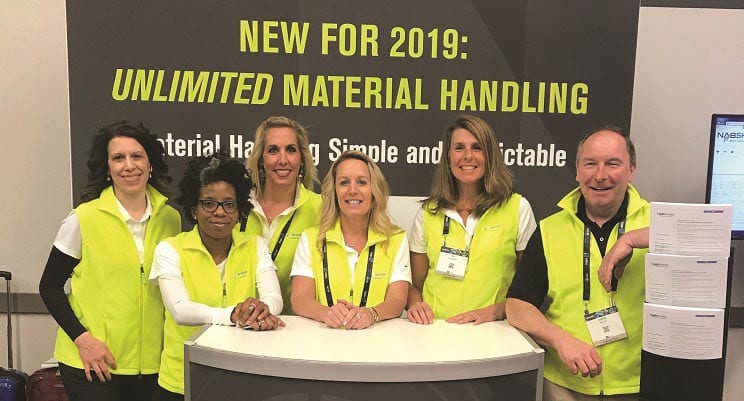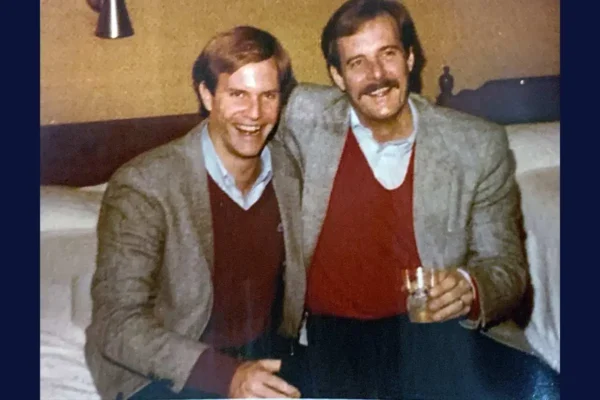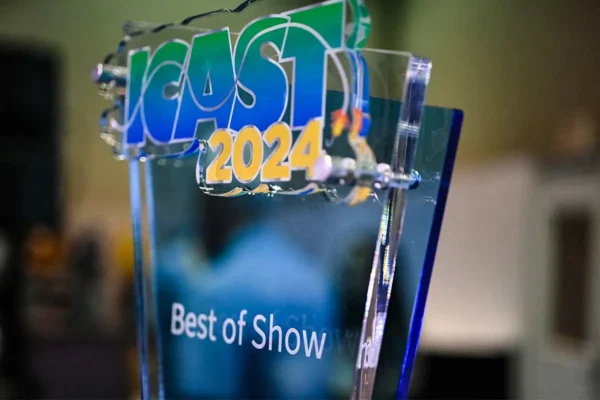(Pictured: The Tradeshow Logic team supporting the onsite sales effort for NAB Show from L-R: Michele Weston Rowe, Deidre Jefferson, Amy Chilausky, Tina Carriere, B.J. Enright and Chris Price)
by Cynthya Porter
Confusing and exorbitant drayage calculations. Myriad hidden electrical charges. Mystifying rigging expenses. When it comes to exhibitor pain points, there are plenty out there causing a considerable amount of agony. Many exhibit managers —often those at larger companies—have reluctantly swallowed the bitter pill and adjusted their budgets upward year after year. But for some, the ballooning costs and frustration are just too much to choke down, so they leave tradeshow marketing, instead taking those dollars to road shows or direct mail or anything else that doesn’t require them to get a doctoral degree to decipher a tradeshow exhibitor manual.
B.J. Enright and Amanda Helgemoe are all too familiar with those pain points. Enright is president and CEO of event solution company Tradeshow Logic and Helgemoe is president of national installation and dismantle contractor Nuvista, and from their respective seats on the service side of the industry, they have cultivated a deep empathy for the plight of beleaguered exhibit managers who feel taken advantage of by tradeshow pricing models that almost no one can understand or budget for. The truth is that everyone in the tradeshow universe more or less knows about those pain points too. But the difference between everyone else and these women is that Helgemoe and Enright are doing something real to fix things.
The path each woman took to the exhibition world was different—Enright has been a third-generation general services contracting professional since 1991 and Helgemoe found her way to I&D by way of the corporate side of sales and marketing 22 years ago. But the tie that binds them is work with advocacy for exhibitor issues, and each espouses an unwavering sense that they could—and should—be handled better.
 Enright (pictured right) began working in the industry as a young girl collating service kits for her grandfather’s firm, Andrews-Bartlett & Associates Inc. By college, she had transitioned to the show services desk, and indelibly imprinted in her mind are the days when her mother, Bonnie Aaron Sorensen, now the Tradeshow Logic CEO, would rally the staff at meetings. “She has always been an advocate for exhibitors,” Enright says. “She wanted everyone to work in the exhibitor services area so they could understand it, and at company meetings, she would ask the room, ‘Who all is in exhibitor service?’ and she would make everyone in the company raise their hand.” The business, Enright says, is in her blood and she’s always loved it. Also in her blood is a sense that she should give back by advocating for exhibitor rights, something she says her grandfather’s firm was always known for.
Enright (pictured right) began working in the industry as a young girl collating service kits for her grandfather’s firm, Andrews-Bartlett & Associates Inc. By college, she had transitioned to the show services desk, and indelibly imprinted in her mind are the days when her mother, Bonnie Aaron Sorensen, now the Tradeshow Logic CEO, would rally the staff at meetings. “She has always been an advocate for exhibitors,” Enright says. “She wanted everyone to work in the exhibitor services area so they could understand it, and at company meetings, she would ask the room, ‘Who all is in exhibitor service?’ and she would make everyone in the company raise their hand.” The business, Enright says, is in her blood and she’s always loved it. Also in her blood is a sense that she should give back by advocating for exhibitor rights, something she says her grandfather’s firm was always known for.
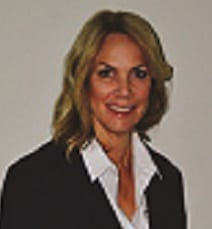 Helgemoe (pictured left) always knew she wanted to run her own company, she just didn’t know at first what it would look like. It was chance that angled her into the industry through the I&D door, but after four years working for other firms, she knew what she wanted to do. “I felt the timing was right to go out on my own and build a better product and service,” she says. Now, having achieved that through NuVista, she focuses energy on the mission of the Exhibitor Advocacy Group, an organization comprised of exhibitors, show organizers, union leaders, exhibit houses, and general services contractors that spreads the gospel of fair market fees and transparent pricing to show organizers around the country.
Helgemoe (pictured left) always knew she wanted to run her own company, she just didn’t know at first what it would look like. It was chance that angled her into the industry through the I&D door, but after four years working for other firms, she knew what she wanted to do. “I felt the timing was right to go out on my own and build a better product and service,” she says. Now, having achieved that through NuVista, she focuses energy on the mission of the Exhibitor Advocacy Group, an organization comprised of exhibitors, show organizers, union leaders, exhibit houses, and general services contractors that spreads the gospel of fair market fees and transparent pricing to show organizers around the country.
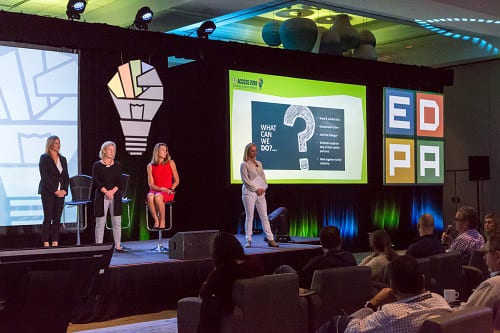 It was that mutual concern for the industry that brought Enright and Helgemoe together to push for exhibitor rights. The pair gave a presentation at the last Experiential Designers and Producers Association (EDPA) ACCESS conference to talk about a movement for change that is starting like a ground-swell but has the makings of a tidal wave. In short, they spoke of a pricing model that includes flat rates for material handling and all-inclusive pricing for some show services, both measures that would save many exhibitors significant sums and infinitely simplify show billing. (Pictured L-R: Amanda Helgemoe, Sue Huff, B.J. Enright and Anne Trompeter at EDPA ACCESS seminar on the “State of the Industry” introducing the NAB Show Cares initiatives)
It was that mutual concern for the industry that brought Enright and Helgemoe together to push for exhibitor rights. The pair gave a presentation at the last Experiential Designers and Producers Association (EDPA) ACCESS conference to talk about a movement for change that is starting like a ground-swell but has the makings of a tidal wave. In short, they spoke of a pricing model that includes flat rates for material handling and all-inclusive pricing for some show services, both measures that would save many exhibitors significant sums and infinitely simplify show billing. (Pictured L-R: Amanda Helgemoe, Sue Huff, B.J. Enright and Anne Trompeter at EDPA ACCESS seminar on the “State of the Industry” introducing the NAB Show Cares initiatives)
But this wasn’t just pie-in-the-sky talk. The model they shared was set to be rolled out at the National Association of Broadcasters (NAB) Show 2019, a mammoth event for the media communications industry, and the very thought of it was radical enough to set the room buzzing. After all, if someone is saving money, that means someone else is making less money, or so conventional thinking suggests. And if someone is making less money, they are bound to be unhappy, at least in theory.
But the reality, Helgemoe says, is that profits for many were already shrinking anyway. The pricing model generally in place for the past several decades was rising so exponentially that it was pushing some little exhibitors right off of the show floor. For even larger companies, huge drayage charges were prompting them to demo less and pull back on their show-floor footprints. And for exhibitors continuing to buy space, the mind-numbing confusion caused by the show services book meant they were utterly unable to accurately budget for expenses, causing many to simply spend less so they could better weather the billing surprises at the end.
Smaller exhibitor numbers inevitably resulted in lower attendance for many events, and the tradeshow industry was off to the races in a viciously destructive circle. Venues, show organizers, general service contractors (GSCs) and exhibitor-appointed contractors (EACs) have all felt the squeeze of fewer dollars floating around the tradeshow universe, and it has been becoming increasingly obvious to people like Helgemoe and Enright that the old ways are not working. “For as long as the industry has been here, it has been called a cottage industry, meaning each little show had its own house and did everything however it wanted to,” says Helgemoe. As such, rates for things like drayage rose relatively unchecked and show service pricing increasingly lost its transparency, with exhibitors usually forking over more in the end than they anticipated. “But it has hit a ceiling and it can’t keep going,” Helgemoe says.” Corporations can’t sustain it—they aren’t increasing their budgets anymore so they are going to have to make cuts if prices continue to rise.”
A few shows have tried over the years to institute more sane pricing models—most notably PACK Expo, which switched to flat-rate drayage fees at least a decade ago. Though the show eventually boomed with the new fee structure, the concept didn’t really get a foothold elsewhere in the industry, Helgemoe says. With more large firms controlling multiple shows and pressure only growing on exhibitor budgets, the time to push for more broad acceptance of a new pricing model is now, she says, lest the industry continue to suffer under the old ways.
Enright would argue that the old pricing model has never worked, primarily because it causes significant exhibitor distress and disenfranchises them in the process. “I think exhibitors for so long have felt like they are taken for granted,” she says. “Like if we build it, they will come, and no one goes to the exhibitor to ask them what they need.” As such, when Tradeshow Logic functions as a GSC, which is one of the capabilities of the company, it has always used a variation of the exhibitor care and pricing models put in place for NAB because Enright thinks it’s only right.
Tradeshow Logic was not the GSC for NAB, but rather it was a consultant brought in by the association because leaders were aware of the company’s revolutionary show production model. “They approached us and said, ‘We want you to make exhibiting easier and lower costs significantly and in a way that will stay in place on an ongoing basis,’” says Enright. “They wanted us to challenge the industry paradigm. Of course, there were people who said it can’t be done, but we started doing research—talking to exhibitors and exhibitor-appointed contractors to identify what their challenges were.” Enright says the NAB Exhibitor Advisory Committee was instrumental in generating a frank dialog, and the willingness of the NAB senior leadership to drive innovation was a pivot point for the organization. What emerged from that process was NAB Show Cares, a show-services program that gets to the heart of what was bothering NAB exhibitors most.
The most striking element of NAB Show Cares is a flat drayage fee of $3.85 per square foot of booth space no matter the weight or volume of material being moved to the show floor. Helgemoe says she had customers who saved as much as 60 percent under the new material handling structure. Also of considerable note is revamped and reduced rigging pricing that includes rigging supplies with the rigging crew rate for one transparent fee, and the new “no surprises electrical outlet pricing” that lowered the price and wrapped all electrical charges into one up-front cost. Exhibitors also gained the ability to sell goods on the show floor and access their own clouds through a new portal.
To achieve the significant savings that NAB Show Cares represented, Tradeshow Logic bid out each element of show services separately: material handling, electrical, rigging, and everything else together (including decorating, furniture, etc.). The rationale for this, Enright says, was that it would isolate each service and promote fair market pricing for it. It also gave organizers the ability to consider specialized vendors who may have never crossed the show’s radar before, and it allowed NAB officials to see the true costs of each component of the event.
But mostly, Enright acknowledged, it was to wrestle the crocodile in the room: drayage. “Material handling is kind of like alcohol at a restaurant,” she says. A lot of profitability can be cloaked in alcohol, she explains, much like the profit margins that can be tucked into drayage charges.
And those profit margins, Helgemoe says, have gotten a bit out of hand, with the wrong group often being blamed. “A misconception is that the rates have to be so high because of union wages,” she says. “They are taking a beating over it, but union wages are not tracking anywhere near the increases in material handling, which can be at a minimum double, or four, five, six times, sometimes even 10 times the rate of inflation over the past 20 years.” Case in point: A 10-year study of cost increases at McCormick Place in Chicago found that over that span, union wages rose 23 percent, independent labor wages rose 24 percent, inflation rose 19 percent, and drayage—on the low end—increased by 42 percent, and on the high side by 142 percent, sometimes even within the same show, Helgemoe says.
But exhibitors might even be willing to forgive some of the burgeoning costs if they were told about them up front rather than feeling sticker shock when they receive the bill. “I think, of the pain points, that transparency is at the top,” Helgemoe says. “That came out of listening to customers who are very, very frustrated that they couldn’t get transparency in an exhibitor service kit. They need fair market pricing and they need predictable costs. Those things are at the core of the problem. If show organizers are upset because the show floor is declining, we have a solution for them. We believe if organizations really understood the pricing better, then they might be able to negotiate better on behalf of exhibitors and control these costs.”
The new pricing model may not be popular with everyone, as the 10-by-10-foot booth exhibitors must now pay the same material handling fee per square foot as everyone else, even if they previously hand-carried their materials into the show and paid zero material handling charges. In the case of PACK Expo, the year they first changed to a square-foot model for drayage, the show floor did shrink and officials were wary of the same possibility at NAB. But that was not the case, Enright said, and it appears that the changes will only make the show stronger.
Part of the point, Enright says, is to encourage all exhibitors to create a better experience for attendees. She hopes that the savings from lowered costs will be poured back into the exhibit somehow and that the flat fee for any amount of material handling will encourage exhibitors to bring more elaborate efforts to the show floor.
Enright is quick to point out that there is no generic fix for every show, as flat-rate material handling might not be feasible for certain industries, rigging fees might be more complex for others, and the differences in exclusive providers from one venue to the next might complicate certain changes. “Every show is different and not all can do exactly what NAB Show Cares does,” she says. “Where the pressure comes in is that organizers can no longer believe that exhibitors will automatically come.” The key, she adds, is for associations and organizers to be sincere in engaging exhibitors to talk about what would make their experience more satisfying. “The most important thing is that exhibitors feel that they were heard and it resulted in significant changes. At NAB, exhibitors now believe that something is going to change when they communicate with organizers about problems.”
With NAB 2019 under their belts, Enright and Helgemoe seem optimistic that the numbers will support the concepts employed. Helgemoe says her clients were ecstatic at the savings they achieved under the new pricing model. Enright says anecdotal evidence suggests the show did well with the new model, but she is cautious to say that she and her team will assess everything about the roll out of the revamped pricing to see if anything needs tweaking.
Even though the results are preliminary, it appears the women’s efforts for change have the potential to be a really big deal—to transform the industry even. Perhaps it wasn’t what they envisioned would be their legacy when they first entered the tradeshow world as young women decades ago. But today, both say it is their mission to pour goodness into an industry that has been so good to them. “I was taught from my parents that we are here to serve other people,” Helgemoe says. “That’s always been my underlying motivation—it’s not about me; it’s about my ability to affect people in a positive way.” Enright, who says her grandfather imparted similar values to her, echoes those sentiments. “I would really like people to know that I care—I love exhibitors and I really want to give back,” she says. “I would like to implement change so the industry can go on and thrive. It’s a really great industry.”
This story originally appeared in the July/August issue of Exhibit City News, p. 24-27. For original layout, visit https://issuu.com/exhibitcitynews/docs/ecnflipbook_julyaugust_2019_web






